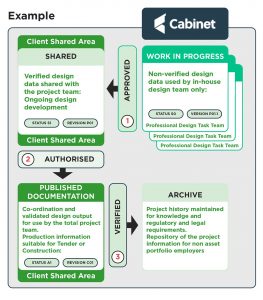Graitec explores the need for robust standards and working practices to streamline the BIM process and address the data issues that have traditionally hindered construction
Over the years, we have seen many industry sectors digitally evolve, with the manufacturing sector first showing clear evidence of the transition and, more recently, the digitisation of the architectural, structural engineering and construction space with the onset of digital working processes in the form of BIM, for example.
From the first Industrial Revolution to the fourth, we are now in the digital era where data is key but for many, data has been the stone wall to unlocking true potential. A barrier that has held innovation, productivity and overall bottom line profitability in check across entire business sectors until data challenges have been addressed.
By introducing robust data standards and working practices, we can start to forge forward and overcome the consistent challenges regularly seen where poor, unreliable and inaccurate data often set the baseline standard or initial data reference point, resulting project delays and unplanned overspend.
Project or product delays, poor decision making and working to the wrong information at the wrong time are just some of the inherent consequences businesses face daily by not addressing their own data challenges. But this is relatively easy to correct, simply by deploying robust data systems and spending a little more time and effort at the front-end, the result of which is more efficient and effective downstream processes, as well as data accuracy, which is so important in the AEC sector.
Industry 4.0 is the name given to the current trend of automation and data exchange. It includes cyber-physical systems, the Internet of Things (IoT), cloud computing and cognitive computing, which is the simulation of human thoughts in a computerised model.
When we think about innovation and disruption, industries like manufacturing, finance and healthcare typically spring to mind. Construction, on the other hand, is probably not as well known, as the sector has in the past lacked the pace and drive to progress forward with the inevitable digital transformation.
This is hardly surprising, considering the architectural, structural engineering and construction sector is historically conservative, risk adverse and highly cost-conscious, which to be fair is entirely understandable given the sheer number of stakeholders and contractors involved in a typical project.
Moreover, typically the senior personnel in many AEC firms first honed their professional skills when paper-based deliverables were very much the norm. However, as the digital generation become an increasingly larger slice of the labour force, many are moving into more senior positions and their digital skillset is already helping to address the historic status quo.
Most by now will be aware of BIM and that in 2011, the UK government published the construction strategy aimed at reducing the cost of public sector assets by up to 20% by 2016. This considered that waste can be reduced if standards and working processes can be implemented.
PAS 1192-2:2013 in the past has helped to define a code of practice which has been sponsored by industry organisations to meet an immediate market need following guidelines set up by BSI (British Standards Institution). ISO19650 P1 and P2 now set out a method for managing the production, distribution and quality of construction information, including that produced by CAD systems.
The principles for information sharing and common modelling outlined in this standard underpin the BIM Level 2 standards.
These are just two of many documents that are available to help inform and guide industry and organisations alike. Guidance that will help the fruition of the outlined plans, delivering benefits widely seen in other sectors, including lower project costs, decreased time to market and project lead times, sustainability and similar to IoT – data that can help define outcomes and improve performance over time.
 Graitec Group, a global Autodesk Platinum partner providing cutting-edge technology solutions to help customers in the construction and manufacturing space, has recently acquired Open Tree, founders of a best-in-class “Work in Progress” (WIP) software solution: Cabinet.
Graitec Group, a global Autodesk Platinum partner providing cutting-edge technology solutions to help customers in the construction and manufacturing space, has recently acquired Open Tree, founders of a best-in-class “Work in Progress” (WIP) software solution: Cabinet.
Cabinet delivers a solution that complies with ISO19650 P1 and P2, and helps to significantly reduce the cost of delivering a BIM project by streamlining your production and delivery process. Cabinet is a managed WIP environment that automates and intuitively drives compliance. From automated file naming, through to the seamless upload into your clients CDE (common data environment), Cabinet delivers a smart solution.
There is no doubt the construction industry is catching up and that technological advances have helped bolster this. According to Statista, the construction output value of Great Britain was worth approximately £164bn in 2017 and, as of the third quarter in 2016, some 296,093 firms employed 2.96m people, either directly or indirectly. The Office for National Statistics also states the number of firms operating has continued to rise, increasing by 6.2% in 2017.
With an ever-growing sector (despite 2019 predictions of market contraction), it is vital that AEC data challenges are addressed in the short term. Robust solutions and processes need to be adopted and improved upon.
There is still a long way to go and with Brexit looming, “uncertainty” is becoming the thought on everyone’s mind. That said, effective communication, collaboration and the ability to make informed decisions based on quality data will undoubtedly deliver measurable long-term benefits.
To discuss how to enhance and effectively manage your existing WIP processes for
digital delivery or to explore how Opentree Cabinet’s Work in Progress data management solution can help your business, contact Gary Edwards at Graitec on 023 8086 8947 or visit https://www.opentree.co.uk/.
Tel: (023) 8086 8947
Please note: this is a commercial profile.













